University of Vermont graduate student workers push for union with supermajority support
University of Vermont graduate student workers are campaigning to form a union.
Of the roughly 700 master's degree and doctorate students who teach, grade, conduct research, and perform other duties for the university, 65% have signed authorization cards in support of the union.
"No graduate student gets paid near the livable wage needed to survive in Chittenden County," said Marc Feinstein, a student and organizer with the union campaign UVM Graduate Students United. "I would find it to be deeply concerning and hard to believe if the largest employer in the state cannot afford to pay their workers a livable wage."
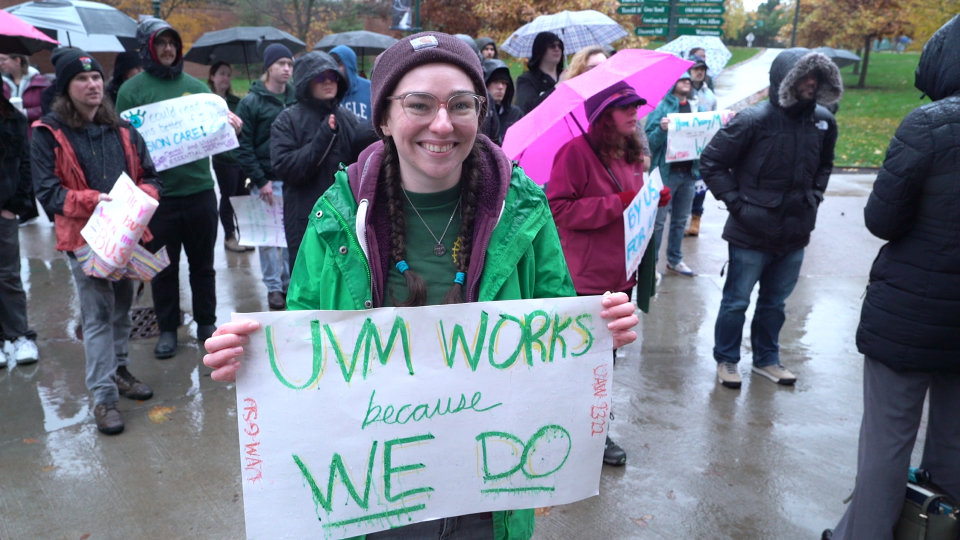
When contacted for a statement on the union campaign, the university administration sent the Burlington Free Press a public letter and FAQ that expresses opposition to the union.
"UVM views the faculty-graduate student relationship as primarily and predominantly an educational relationship," the administration wrote. "The unique relationship of graduate students with their faculty and departments is thus not well suited to representation by a union."
The administration recognizes the research and teaching work that graduate students do primarily as opportunities for educational and professional development. The graduate students, however, see this work as labor that the university needs to function.
"I personally have not received any special or individualized relationship from the people who sent this letter," said graduate student organizer Samantha Brewer. "And I think that collective action is the only way to get the rights and demands that we deserve."
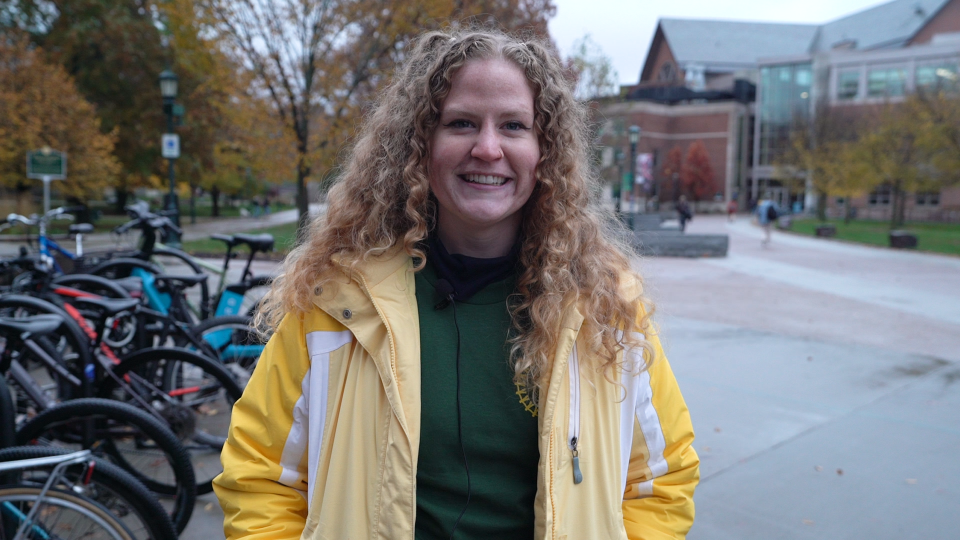
The unionization process
The graduate employees filed their 424 union authorization cards and petition for state verification to the Vermont Labor Relations Board on Oct. 30.
The Labor Relations Board typically takes two to six weeks to verify that the authorization cards are legitimate. Then the cards arrive at the desk of UVM administration, which can choose to accept or deny the scope of workers covered by the union. The proposed scope is all of the approximately 700 graduate students who are paid to conduct work for the university.
If the administration approves the scope, then an election will take place among graduate student workers to determine whether they want to unionize. If administration rejects the scope, then the scope will become a point of bargaining between UVM Graduate Students United and the administration.
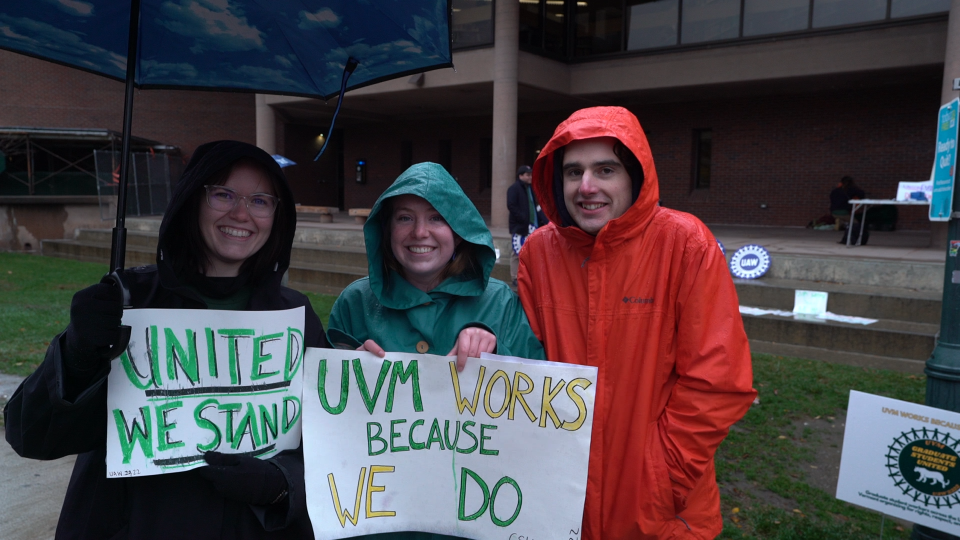
If a majority of the students vote in support of the union, they will be represented by the parent union United Automobile, Aerospace, and Agricultural Implement Workers of America (UAW), which currently represents about 25,000 graduate employees across the county. If the union does not get majority vote, the union will not form.
Graduate students would not have to be a part of the union if they don't want to, but all graduate student workers would have the option to join the union under the proposed scope, according to Feinstein.
Administration and students clash over union
There are currently 156 colleges and universities across the country that have graduate student unions.
UVM administration said in their letter that the best model for addressing graduate student issues is not unions but instead the Graduate Student Senate, which acts as a platform for the voices of graduate students.
"Collective bargaining we've determined is our only method of moving forward, as all of the bargaining we've tried to do with the university in the past through the Graduate Student Senate has not been fruitful," Brewer said.
In their letter, UVM administration refers to the union campaign as "third-party representation," implying a distinction between the interests of the union and the graduate students.
The letter has "a lot of union busting language, trying to pit us against each other," Brewer said. "We are the union, we represent the union, we organize the union, we run the union, and we love the union."
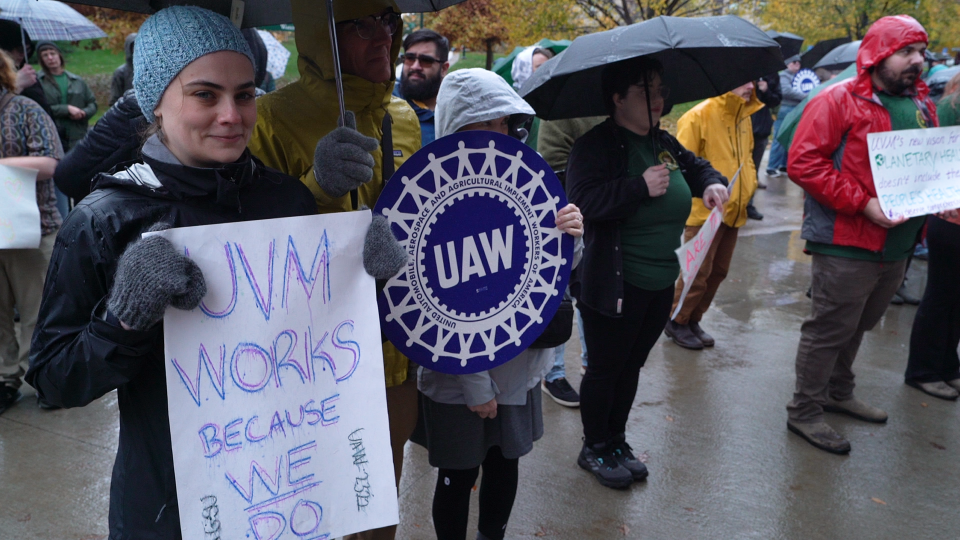
Why are UVM graduate students trying to unionize?
Of the approximately 1,650 graduate students at UVM, about 650-700 work for the university. Those graduate employees typically pay no tuition, but do pay a $1,018 "comprehensive fee" per semester for the stated purpose of university infrastructure. Students are campaigning to eliminate this fee as part of the union contract.
A 12-month stipend of $27,850 is paid to master's degree students for their work, and doctoral students are paid $32,000.
On paper, UVM graduate student workers divide their weeks between 20 hours of studies and 20 hours of work, which can include teaching, research, and grant writing. In practice, they often have to spend significantly more hours to meet their work responsibilities — and those extra hours are uncompensated, according to student organizer Iana Curran-Howes.
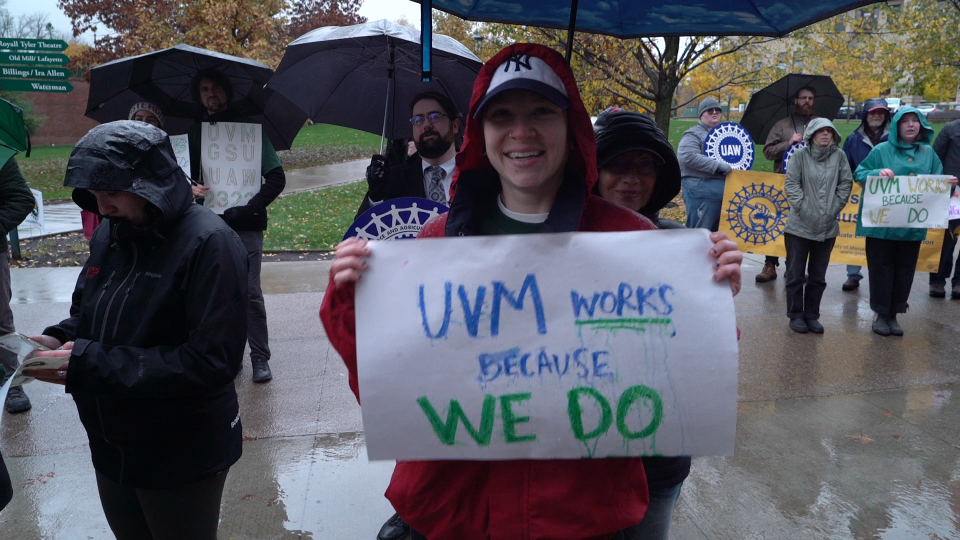
"[UVM] relies on us to write those papers, to do the bench work, to go out and collect the data," Feinstein said.
Setting a firm cap on 20 hours of teaching and research work per week is one of the top demands of the union campaign. Other demands include a living wage, vision and dental benefits, childcare for working parents, and an improved grievance process.
"Our current healthcare policy does not include vision or dental, and I don't know any graduate students who don't have teeth," Feinstein said.
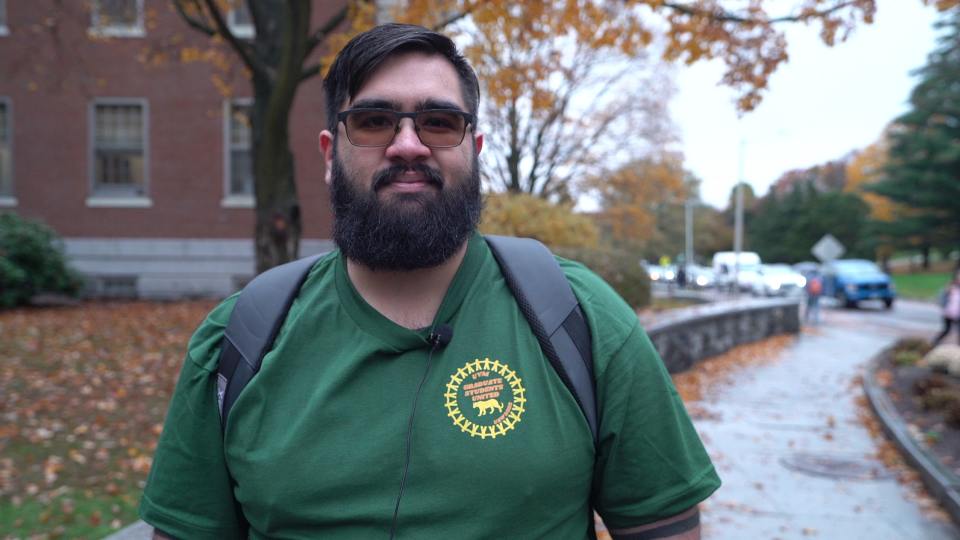
The wage gap
UVM can afford to pay its graduate employees more because it pays its administration six-figure salaries, Iana Curran-Howes said.
University President Suresh Garimella's base pay for this fiscal year was $484,000, according to a report by the UVM Office of Institutional Research and Assessment.
Also this year, Provost Patricia Prelock was paid $367,200, College of Engineering Dean Linda Schadler Feist made $299,479, and College of Arts and Sciences Dean William Falls made $280,147.
"Administration is making six-figure salaries while they make what we make in a year in one month," Curran-Howes said.
Contact April Fisher at amfisher@freepressmedia.com. Follow her on Twitter: @AMFisherMedia
This article originally appeared on Burlington Free Press: University of Vermont graduate student workers rally for unionization

